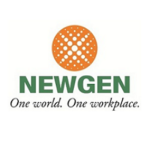As a business partner, we generally use this product to help our customers with their digital transformations. Most of the time we use IBM BPM or DPA to provide a solution and bring continuous process improvements to our customers.
The majority of them are used by business users. It depends on what type of solutions we are building. Some are back-office applications. Some are real, end-user applications. It depends on each use case.
Our clients are using it to automate some features. With Automation Anywhere being a partner, they're trying to automate the process overall. Some customers use us for overall digitalization, automating their processes. From there, they are trying to automate using the RPA features as well.
After being acquired from Lombardi by IBM, BPA was only workflow-related. Over a period of time it evolved. It has a lot of capabilities that were added to the product, like the rules, business decision-making and, now, with a more enhanced toolkit to build applications very rapidly.
The solution has absolutely reduced operating costs. It is customer-specific. We may not know the exact ROI, but it has definitely improved. Some of our customers see more than an 80 percent reduction, depending on where it's used.
The solution has helped with compliance and governance issues. Most of the time when we build a solution using this product, it involves some approvals. Depending upon the scenario, it has to go for compliance approval. And that can be incorporated within the solution, what we build using this application.
One of the most valuable features is the way that they are adapting to the market. Initially, it was doing only workflow. Now it has started bringing all the other components like rules within the workflow and then the integration with RPA.
Also, the usability is pretty impressive. We can bring this quickly to market. We can start with a quick proof of concept and then we can take that to the next level. We can also use it to build auxiliary solutions for future use.
From what I understand, in the next release they're actually going to combine all of this together as one integrated solution. Obviously, once they started acquiring more and more products, the flavors were going to be there. Sometimes, you need an integrated solution. Customers don't want to have to say, "Oh, I'm acquiring this product, now I have to go build up that product. I have to go and build something else in another product and integrate." If we could have one unified way to build a solution, that would really help.
It's very scalable. IBM has stacks of software to quickly bring into play.
Start taking advantage of all the features that have been given as part of this product. Sometimes - especially the DBAs - they will execute it as an IT project. More than that, they should start using it from a holistic perspective. How can this bring value to the whole organization?
It's like a double-edged knife: If you don't know how to use it, it might come back to haunt you and hurt you. But the way they have implemented it, evolved it, it's actually helping us to improve and provide plug-and-play. We find that if it is not going to go well, if we need to create more APIs to overwrite some solutions, then we can actually do plug-and-play as well.
I would rate Business Automation Workflow at eight out of ten. Compared to other products, this one has actually evolved a lot, and they have brought a lot of value with it, especially adapting to the rapid expansion of industry.
















